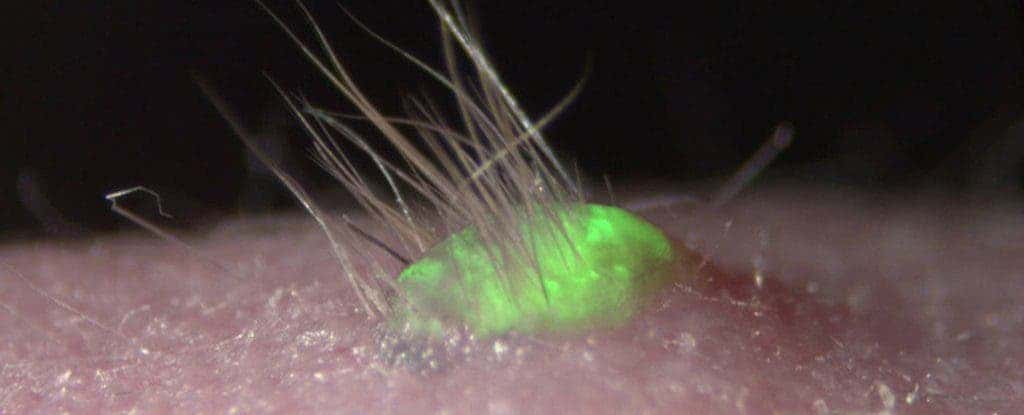Creating artificial skin may sound weird, but it can be extremely useful (or even life saving) for people who suffered from burns or any type of similar accident; it is also useful for testing drugs or cosmetic products. Skin transplants are a growing need, and many teams from across the world hope to one day be able to create artificial skin to fulfill that need. This latest attempt from Japan takes us one step closer to that goal: it can create new hairs and even sweat.

Led by researchers from the RIKEN Centre for Developmental Biology, the team used gum cells from mice, converting them into a new type of stem cell. They then used these cells to build a 3D layer of skin. The artificial skin replicates all the three major layers of skin – the waterproof epidermis which gives our skin tone, the dermis which contains tough connective tissue, hair follicles, and sweat glands, and the hypodermis which is made of fat and connective tissue.
They then transplanted the skin back to hairless mice, where they started to develop normally and integrated fully with the rest of the body.
“Up until now, artificial skin development has been hampered by the fact that the skin lacked the important organs, such as hair follicles and exocrine glands, which allow the skin to play its important role in regulation,” said Takashi Tsuji, who led the new study.
“With this new technique, we have successfully grown skin that replicates the function of normal tissue. We are coming ever closer to the dream of being able to recreate actual organs in the lab for transplantation, and also believe that tissue grown through this method could be used as an alternative to animal testing of chemicals.”
Previously, other teams have tackled the problem from a different angle. Another group has created an artificial skin which can feel pressure and tell your brain about it, offering a realistic sensation. Perhaps the two can be blended together, and we can soon have artificial skin which can feel pressure and also create hair and sweat. The real deal is getting closer and closer.
Journal Reference: Bioengineering a 3D integumentary organ system from iPS cells using an in vivo transplantation model.



